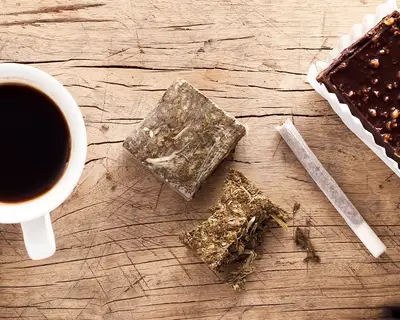RESEARCH TRIANGLE PARK, NC— Since the election, eight states and the District of Columbia now have legalized recreational use of marijuana and 22 other states allow for legal medicinal use of cannabis, which poses both promises and challenges for users and states, according to researchers at RTI International.
A new RTI Press paper highlights the benefits and risks of marijuana edibles for consumers and policymakers to consider.
“The net result of changing marijuana laws is that more people will have access to a legal source of cannabis, with increased incidence of cannabis use likely following,” said Jenny Wiley, Ph.D., senior fellow of behavioral pharmacology at RTI and co-author of the paper. “Although many people will choose to smoke cannabis, many will consume cannabis in food or beverage products. Our goal in writing this paper was to inform consumers and policymakers of special issues with edibles that are not typically encountered with smoked cannabis.”
RTI researchers examined current research about edibles and the approaches Alaska, Colorado, Oregon, and Washington have taken to regulate edibles where recreational marijuana has been legal. Edible marijuana products include baked goods, candies and beverages infused with cannabis that can be homemade or prepared commercially.
“Edibles are often viewed as a safe, discreet and effective means of receiving the intoxicating and/or therapeutic effects of cannabis—such as alleviating anxiety or reducing pain—without the potentially harmful risks of smoking,” Wiley said. “However, edibles come with their own set of risks.”
The effects of marijuana are felt less immediately when ingested rather than inhaling, according to researchers. When inhaled through smoking or vaping, THC takes effect within minutes with its peak effect in about 20 to 30 minutes. It takes longer to feel the effects of edibles because the peak effect of oral THC occurs after two to four hours after ingestion.
Consumers often do not understand the delayed effects of edibles and may eat a greater amount than intended before the drug’s effects have set in, which may lead to an unintended overdose. Overdoses can result in cognitive and motor impairment, extreme tiredness, agitation, cardiac stress and psychotic symptoms such as hallucinations and anxiety.
As the most commonly used illicit drug in the United States, marijuana is estimated to be used by 9.5 percent of adults and 23.7 percent of youth. Previous research has indicated that as the number of marijuana users increases, the perception of its potential harmful effects decreases.
“The lack of consistency in cannabis and the delayed intoxication may cause both new and experienced users of cannabis to consume higher than intended amounts,” said Scott Novak, Ph.D., senior developmental epidemiologist at RTI and co-author of the paper. “Research has shown that most health care visits due to cannabis intoxication is likely due to users not aware of the delayed effects.”
Children also may be at risk of accidentally consuming marijuana edibles when the products are made to resemble treats such as brownies, lollipops and gummy candies.
Edibles should be labeled and formulated consistently to avoid harming the user, according to researchers. Marijuana is currently illegal at the federal level, which means recreational and medicinal marijuana industries are not subject to federal quality control regulations, but rather regulated on a state-by-state basis.
Alaska, Colorado, Oregon and Washington have all previously legalized recreational sales and use of marijuana and require retail edible marijuana products to be labeled. These states each have specific requirements of how edible cannabis products are manufactured.
“On the production side, much remains to be done to ensure that edibles provide consistent dosage,” RTI researchers indicate in the paper. “On the labeling side, more should be done to ensure that consumers are better educated on how edibles affect the body and that they are aware of how to use edibles safely to avoid concerns such as unintentional adverse effects or highs lasting longer than anticipated.”

- Eight states and the District of Columbia now have legalized recreational use of marijuana and 22 other states allow for legal medicinal use of cannabis, which poses both promises and challenges for users and states
- The effects of marijuana are felt less immediately when ingested rather than inhaling. Consumers often do not understand the delayed effects of edibles, which may lead to an unintended overdose
- Edibles should be labeled and formulated consistently to avoid harming
RTI International Media Relations:
As an independent, scientific research institute with a mission to improve the human condition, RTI International is engaged by clients and partners to conduct evidence-based research and project implementation. We share our work in line with journalistic and scientific standards and maintain a record in RTI’s Newsroom.
RTI International is an independent scientific research institute dedicated to improving the human condition. Our vision is to address the world's most critical problems with technical and science-based solutions in pursuit of a better future. Clients rely on us to answer questions that demand an objective and multidisciplinary approach—one that integrates expertise across social, statistical, data, and laboratory sciences, engineering, and other technical disciplines to solve the world’s most challenging problems.
For more information, visit www.rti.org.
